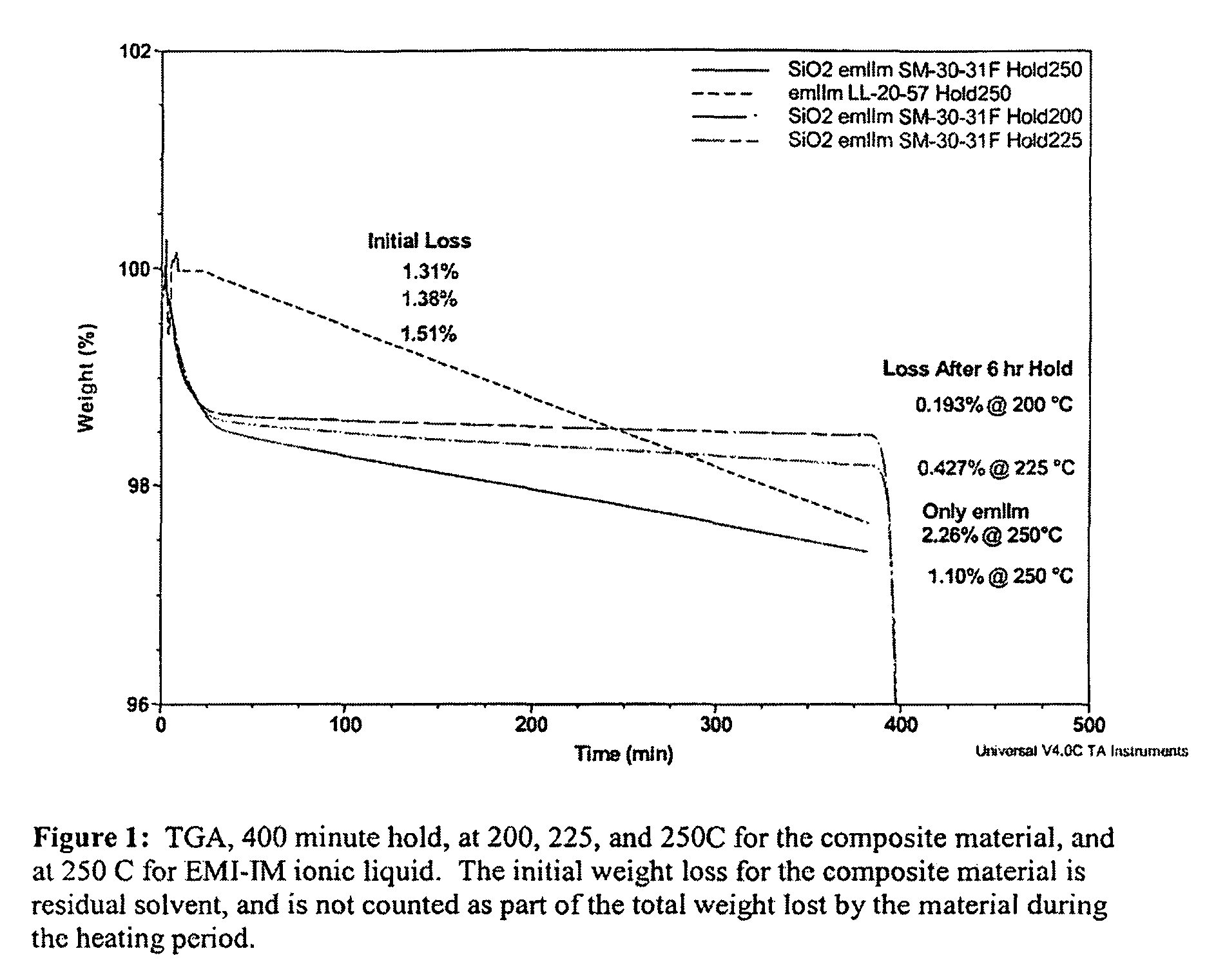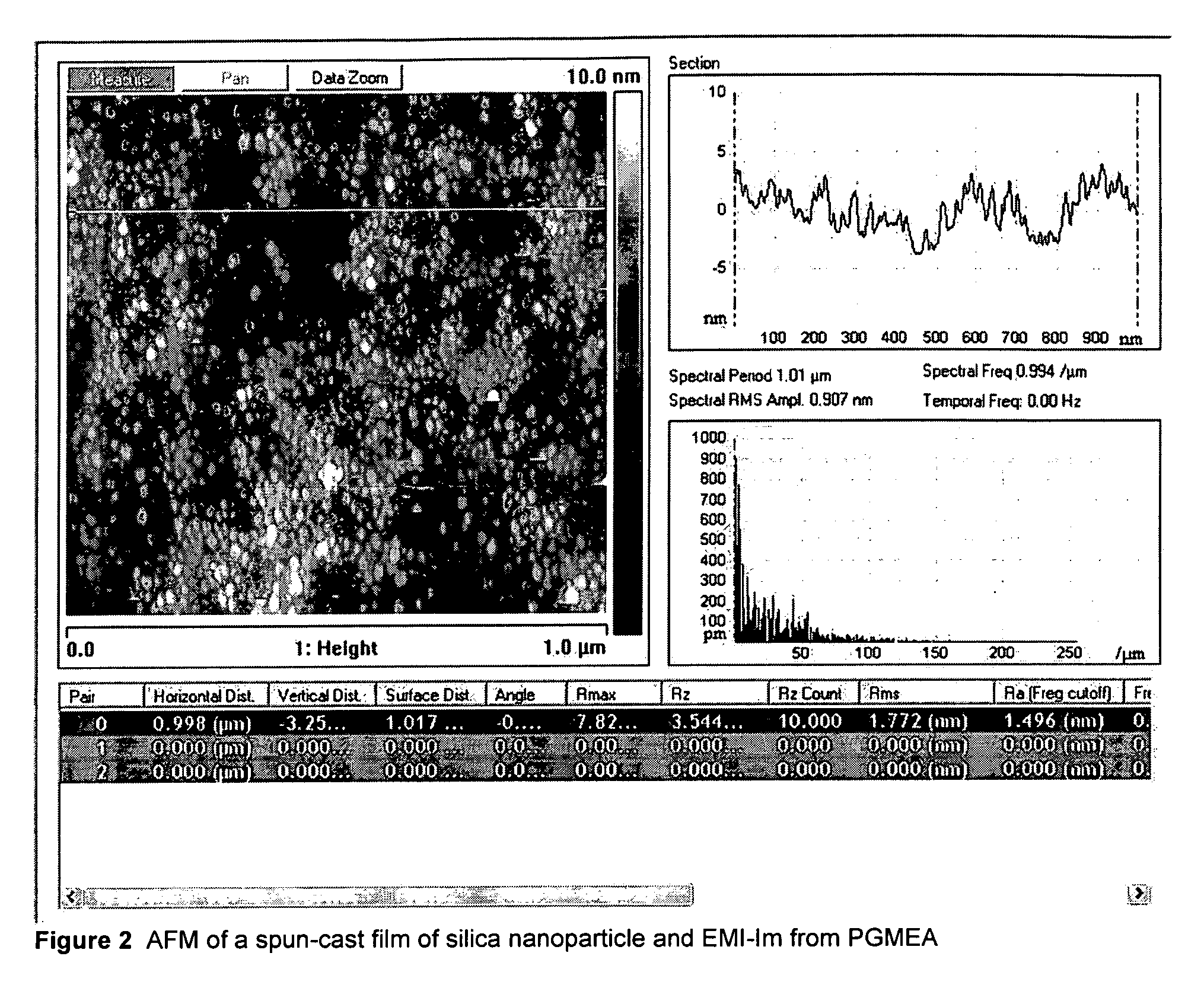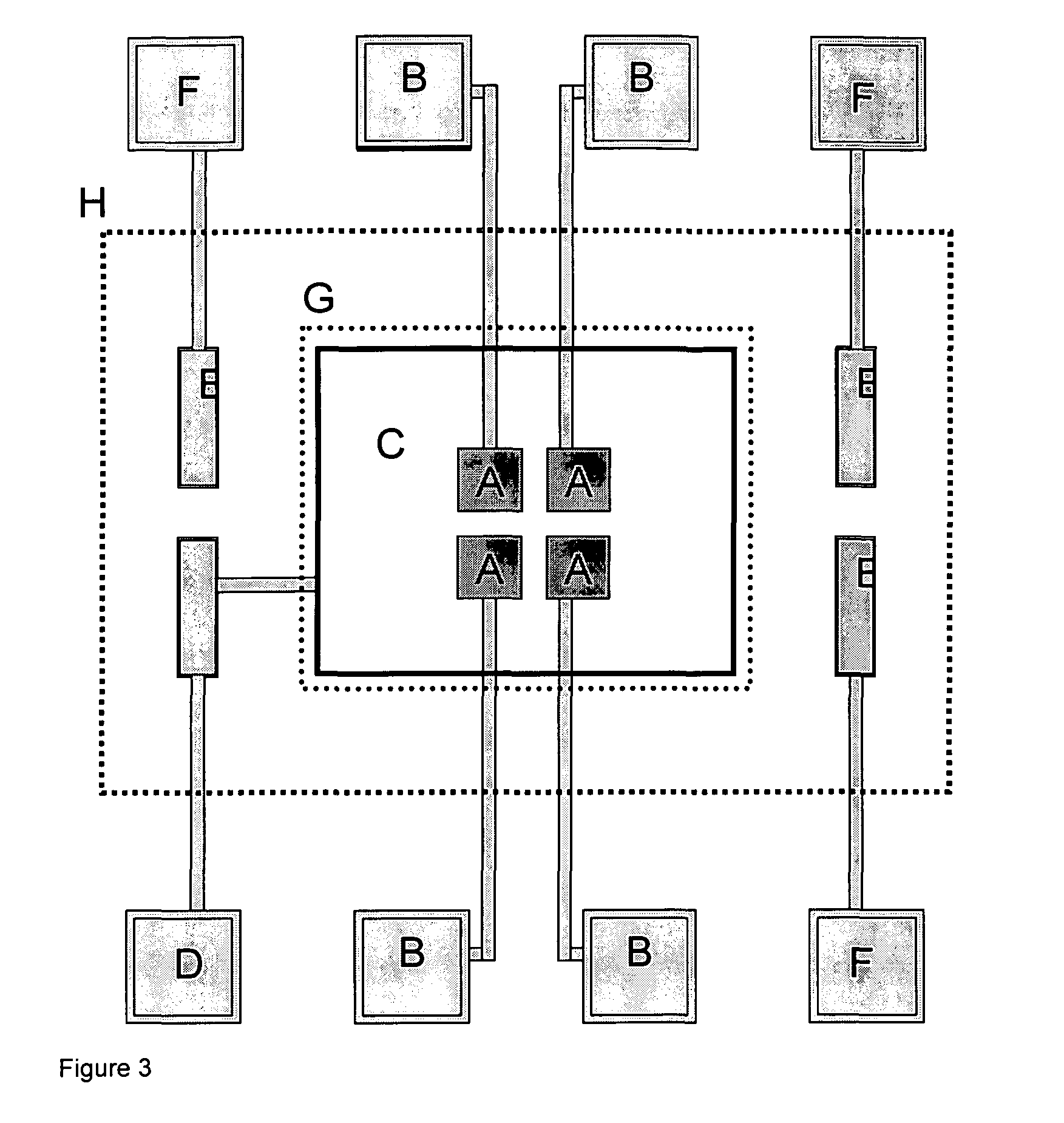Liquid composite compositions using non-volatile liquids and nanoparticles and uses thereof
a non-volatile liquid and composite composition technology, applied in the field of gelled liquid compositions, can solve the problems of limited total particle loading of the gel, difficult to ensure a uniform pore size, and relatively difficult optimization and control of the chemistry of the gel,
- Summary
- Abstract
- Description
- Claims
- Application Information
AI Technical Summary
Benefits of technology
Problems solved by technology
Method used
Image
Examples
example 1
Thick Composite Film
[0362]To a colloidal suspension of silica particles (IPA-ST, Nissan Chemical Company of America) in iso-propyl alcohol, ionic liquid is added in an approximately 1:2 weight ratio to silica. In a preferred embodiment, the ionic liquid is ethylmethylimidazolium bis(trifluoromethylsulfonamide) (EMI-Im).
[0363]Addition of 1 part by weight EMI-Im to 2 parts by weight silica in a 30 wt % dispersion of 10-15 nm silica particles in IPA results in a clear solution, which can be cast into a Teflon pan. The solvent can be allowed to dry at room temperature, or the system can be heated to 60° C. to facilitate the removal of IPA. The resulting transparent film can be removed from the bottom of the pan with tweezers or a spatula, and handled as a free-standing material.
[0364]Addition of significantly less EMI than reported above results in a more brittle material that cracks on drying. Addition of significantly more EMI than reported above results in a paste that cannot be drie...
example n
Film with Al2O3
[0371]To 1 g dispersion of Al2O3 in PGMEA (NanoArc R1130PMA, with dispersant) is added 1 g of PGMEA and 110 mg EMI-SbF6. The solution is poured into a Teflon dish and the solvent is removed by gentle heating. A sturdy film results, and the film is translucent owing to relatively close match of the refractive indeces of the IL and the nanoparticles.
[0372]A similar formulation with 158 mg EMI-SbF6 yields a sticky film rather than a sturdy one. These films have low overall IL loading, which is in part because the distribution of particles in the dispersions are log-normal. In a log-normal system, smaller particles will be able to migrate to the void spaces between larger particles, forcing out IL. As a result, these films become sturdy at much lower particle loadings.
example 2
Thin Composite Film
[0373]To a colloidal suspension of silica particles (pH=2-4) in organic solvent, ionic liquid is added in an approximately 1:2 weight ratio to silica. In a preferred embodiment, the ionic liquid is ethylmethylimidazolium bis(trifluoromethylsulfonamide) (EMI-Im).
[0374]Addition of 1 part by weight EMI-Im to 2 parts by weight silica in a 30 wt % dispersion of 10-15 nm silica particles in PGMEA results in a clear solution. To each gram of this stock solution is added 1.077 g of PGMEA. The solution is mixed by stirring.
[0375]The solution can be spun between 1500 and 8000 rpm onto a 2″ silicon wafer. At 4000 rpm, this film gives an approximately 2500 A thick film. The stock solution itself can be spun as low as 1500 rpm to give a film up to 1.2 um in thickness.
[0376]The films are extremely uniform by ellipsometry, and show an rms roughness of <2 nm by AFM. Individual silica particles can be resolved by AFM, and are tightly packed, though not ordered (FIG. 2). The conduc...
PUM
| Property | Measurement | Unit |
|---|---|---|
| diameter | aaaaa | aaaaa |
| diameter | aaaaa | aaaaa |
| diameter | aaaaa | aaaaa |
Abstract
Description
Claims
Application Information
 Login to View More
Login to View More - R&D
- Intellectual Property
- Life Sciences
- Materials
- Tech Scout
- Unparalleled Data Quality
- Higher Quality Content
- 60% Fewer Hallucinations
Browse by: Latest US Patents, China's latest patents, Technical Efficacy Thesaurus, Application Domain, Technology Topic, Popular Technical Reports.
© 2025 PatSnap. All rights reserved.Legal|Privacy policy|Modern Slavery Act Transparency Statement|Sitemap|About US| Contact US: help@patsnap.com



